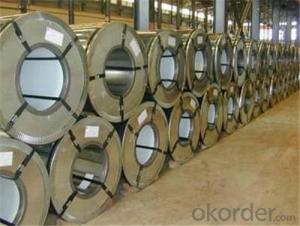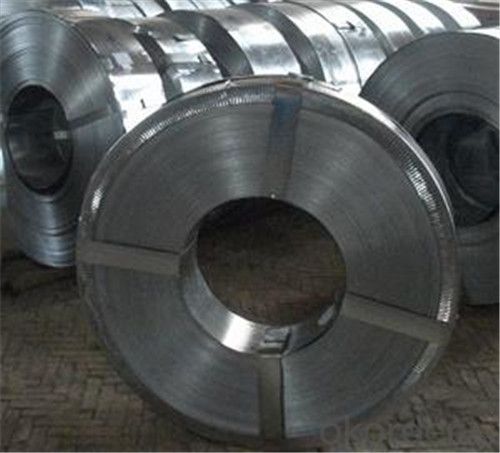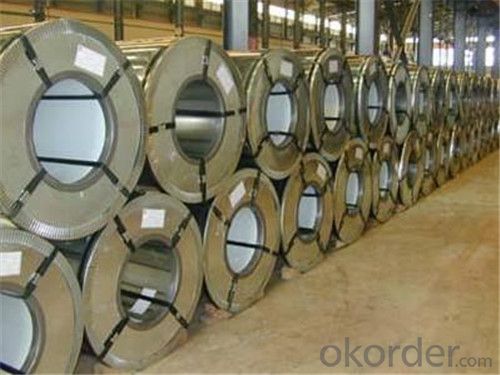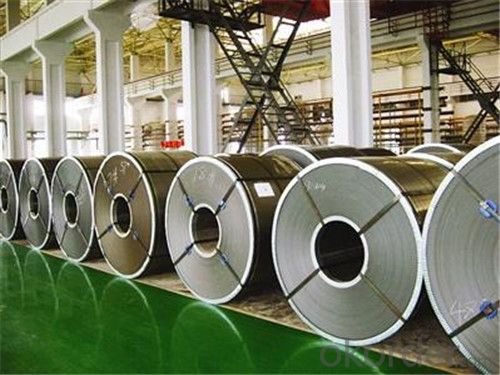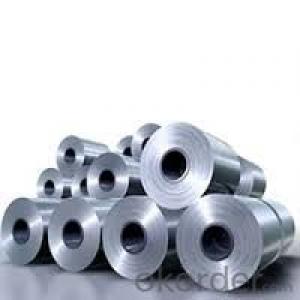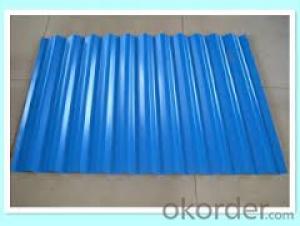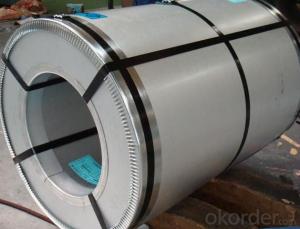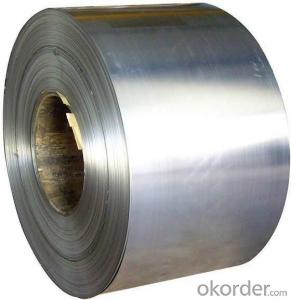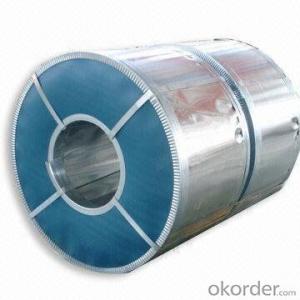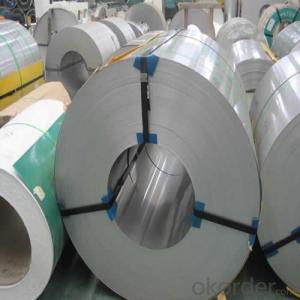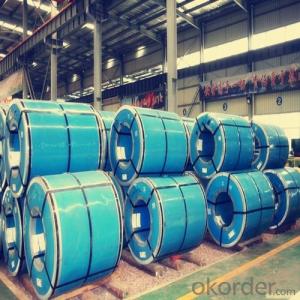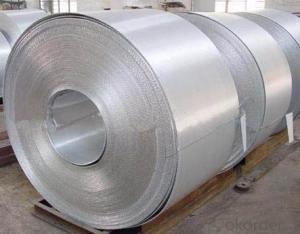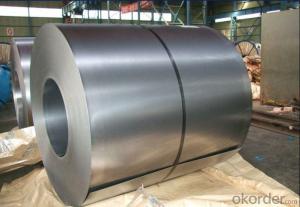Cold Rolled Galvanized Steel Coil for Steel Tube
- Loading Port:
- Shanghai
- Payment Terms:
- TT OR LC
- Min Order Qty:
- 36 m.t.
- Supply Capability:
- 30000 m.t./month
OKorder Service Pledge
OKorder Financial Service
You Might Also Like
Packaging & Delivery
| Packaging Detail: | Standard seaworthy export package |
| Delivery Detail: | 25 days after recepit of 30% TT |
Specifications
Cold roll galvanized coil
Thickness: 0.14-2.0mm
Width: 600-1250mm
Zinc coating:Z60-275g/sqm
ID coil:508/610
Cold roll galvanized coil
Thickness: 0.14-2.0mm
Width: 600-1250mm
Zinc coating:Z60-275g/sqm
The detailed information:
Commodity | Hot dip galvanized steel coil and sheet |
Techinical Standard | JIS 3302 / ASTM A653 / EN10143 |
Grade | DX51D / DX52D/ DX53D/ S250,280,320GD |
Types | Commercial / Drawing / Deep Drawing / Structural quality |
Width | 600-1250mm |
Thickness | 0.14-2.0mm |
Type of coating | galvanized |
Zinc coating | Z60-275g/m2 |
Surface treament | chromed / skinpass/ oiled/slightly oiled/ dry/ anti-fingerprint |
Surface structure | zero spangle / minimized spangle / regular spangle/ big spangle |
ID coil | 508mm or 610mm |
Coil weight | 3-8 MT per coil |
Package | Properly packed for ocean freight exportation in 20''containers |
Application: | Industrial panels, roofing and siding for painting |
Price terms | FOB,CFR,CIF |
Payment terms | 30%TT in advance+70% TT or irrevocable 70%L/C at sight |
delivery time | 25 days after recepit of 30% TT |
Remarks | Insurance is all risks |
MTC will be handed on with shipping documents | |
We accept the third party certificatation test |
- Q: Looking for a new entry door for my home If someone would explain the features and benefits of both fiberglass and steel doors I would greatly appreciate it!!
- Just go with steel well I can brake down a fiberglass door
- Q: Are steel buildings or homes better then wooden buildings? Why?
- Benefits of steel buildings compare to wooden buildings are: ? Strength - Metal offers an overall strength level from within, a strength that other materials can't provide, without the need of extra support beams or other extraneous materials. ? Durability - Morton Buildings are longer lasting than those made from plastic or wood, and they can withstand adverse weather conditions without danger of rotting or mildew. ? Recyclable Materials - If a building is torn down, the materials used in Morton Buildings are capable of being reused and recycled, making Morton Buildings more sustainable than others. ? Stylistic Options - Because metal can be coated with other materials at little cost, the options for color and coating are virtually endless. Materials frequently used to coat metal building include vinyl or plastic. ? Affordability - Building with steel is one of the most affordable choices a consumer can make, be it a large or small project. These benefits are numerous, though there are a few factors to keep in mind when choosing your building materials. There may also be a few downsides or cons to Morton Buildings. I think steel Buildings are good for use in : ? Metal sheds ? Metal industrial parks ? Metal barns ? Aircraft carrier buildings ? Carrier and livestock buildings ? Retail stores
- Q: How are steel coils inspected for elongation using elongation testers?
- Steel coils are inspected for elongation using elongation testers by first selecting a representative sample from the coil. This sample is then mounted onto the tester, which applies a controlled force to stretch the steel. The elongation tester measures the change in length of the sample as it is stretched, allowing the calculation of the elongation percentage. This data is crucial for evaluating the steel's ductility and mechanical properties, ensuring it meets quality standards and can withstand various applications.
- Q: What are the common handling defects in steel coils?
- During the transportation and storage of steel coils, various handling defects can arise, impacting the coils' quality and integrity and potentially leading to future problems. Some of the most frequently encountered handling defects in steel coils are as follows: 1. Damage to the edges: This defect occurs when the coil's edges are bumped or scraped, resulting in dents, scratches, or tears. Such damage weakens the coil's structural integrity, making it more susceptible to further harm. 2. Core damage: The core of a steel coil plays a crucial role in maintaining its shape and stability. However, mishandling can crush or deform the core, leading to coil collapse or distortion. 3. Coil slippage: Inadequate strapping or stacking of coils can cause them to shift or slide during transportation. This can result in coil slippage, causing misalignment, damage to the outer layers, or even complete coil failure. 4. Abrasion: Steel coils can experience abrasion if they come into contact with rough surfaces or other objects during handling. This can lead to the wearing off of the coil's protective coating or paint, exposing the steel to potential corrosion. 5. Moisture damage: Steel coils are susceptible to moisture damage, particularly if they are not properly sealed or protected. Exposure to moisture can lead to rust formation, compromising the coil's structural integrity and overall quality. 6. Overloading: Exceeding weight limits and improper stacking of steel coils in trucks or storage areas can exert excessive pressure and stress on the coils, resulting in deformation, bending, or even coil collapse. Adhering to weight limits and proper stacking procedures is crucial to prevent overloading. 7. Improper lifting: When lifting steel coils, it is important to use suitable lifting equipment and techniques. Failure to do so can cause coil damage, such as distortion or bending, and can also pose risks of injury to workers. To mitigate these handling defects, it is vital to adhere to proper handling and storage procedures for steel coils. This includes using appropriate lifting equipment, securing coils during transportation, avoiding overloading, and ensuring adequate protection against moisture and abrasion. Regular inspections and maintenance are also important for identifying and addressing any potential defects or issues before they worsen.
- Q: What are the different grades of steel coils?
- There are various grades of steel coils available, including but not limited to, low carbon steel, high carbon steel, stainless steel, and alloy steel. These different grades offer varying levels of strength, corrosion resistance, and other mechanical properties, allowing them to be used for various applications in industries such as automotive, construction, and manufacturing.
- Q: What are the different types of steel coil packaging materials?
- Some common types of steel coil packaging materials include wooden crates, steel frames, plastic strapping, stretch wrap, and steel bands.
- Q: How are steel coils shaped into specific forms?
- Steel coils are shaped into specific forms through a process known as roll forming. This involves passing the coil through a series of rollers that gradually bend and shape the steel into the desired form.
- Q: What are the common problems faced during steel coil production?
- There are several common problems that can be encountered during steel coil production. One of the most common issues is coil breakage or damage. This can occur due to improper handling or transportation of the coils, which can lead to cracks or fractures. It is crucial to ensure proper handling procedures are followed to minimize the risk of coil breakage. Another common problem is coil slippage. This occurs when the coils are not securely stacked or stored, leading to them shifting or sliding. Coil slippage can result in damage to the coils and potentially cause accidents or injuries. Therefore, it is essential to have proper storage systems in place to prevent coil slippage. Additionally, coil corrosion is a common problem faced during steel coil production. Corrosion can occur due to exposure to moisture, air, or other corrosive substances. It can lead to the degradation of the steel, reducing its strength and durability. Implementing effective corrosion prevention measures, such as proper coating or storage techniques, is essential to mitigate this issue. Another challenge in steel coil production is coil quality issues. This can include inconsistent thickness, width, or surface defects on the coils. These quality problems can arise due to various factors, such as improper rolling processes, equipment malfunctions, or material defects. Regular quality checks and inspections should be conducted to identify and address any issues promptly. Moreover, coil handling and loading problems can also occur during steel coil production. Improper lifting or loading techniques can cause damage to the coils, leading to deformations or even accidents. It is crucial to train and educate employees on proper handling and loading procedures to prevent such problems. Overall, steel coil production can face various challenges, from coil breakage and slippage to corrosion and quality issues. Implementing proper handling, storage, and quality control measures is essential to minimize these problems and ensure the production of high-quality steel coils.
- Q: hi, i have a steel block with an unussual composition. does anyone know if this is any particular type?c- .6%, si - .33%, mn - .6%, sulphur - .014%, phosphorous - .013%, ni - 1.69%, Cr, 1.07%, molybdenum - .67%
- You have opened a can of worms. Specific types of steel vary not only by composition but by the way they were made, their physical properties and their morphology (microscopic structure). The composition you have given would fit for High Carbon Steel and Medium Carbon Steel. Go to the reference I've given, it allows you to put in 3 of the components of your alloy and then it gives you a list of possibilities. You can open each candidate individually and see the full composition. Hours of fun. :)
- Q: How are steel coils used in the production of steel chains?
- Steel coils are used in the production of steel chains as the raw material. These coils are fed into a machine called a chain-making machine, which shapes and cuts the steel into individual links. The links are then connected together to form the chain, creating a strong and durable product.
Send your message to us
Cold Rolled Galvanized Steel Coil for Steel Tube
- Loading Port:
- Shanghai
- Payment Terms:
- TT OR LC
- Min Order Qty:
- 36 m.t.
- Supply Capability:
- 30000 m.t./month
OKorder Service Pledge
OKorder Financial Service
Similar products
Hot products
Hot Searches
Related keywords

